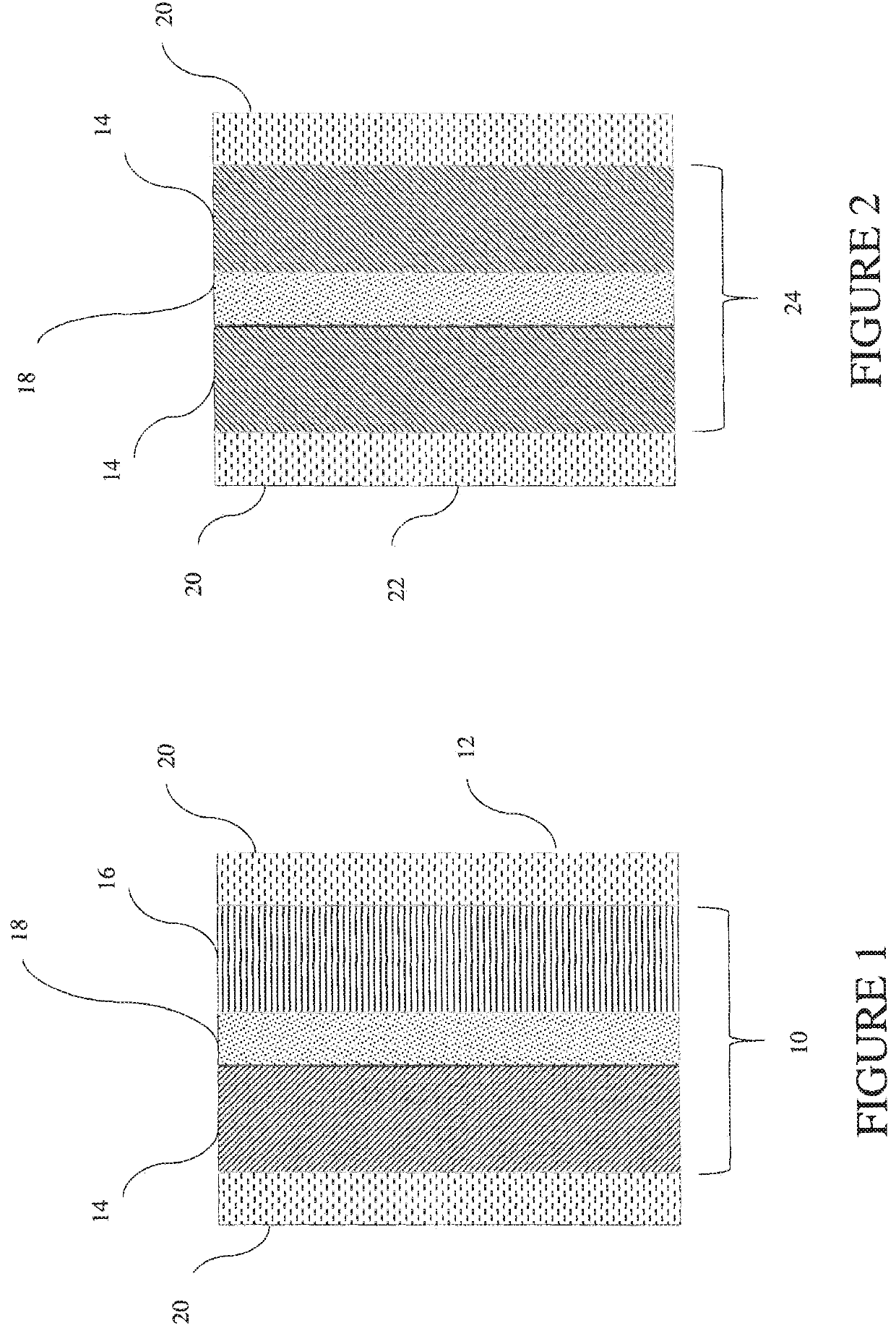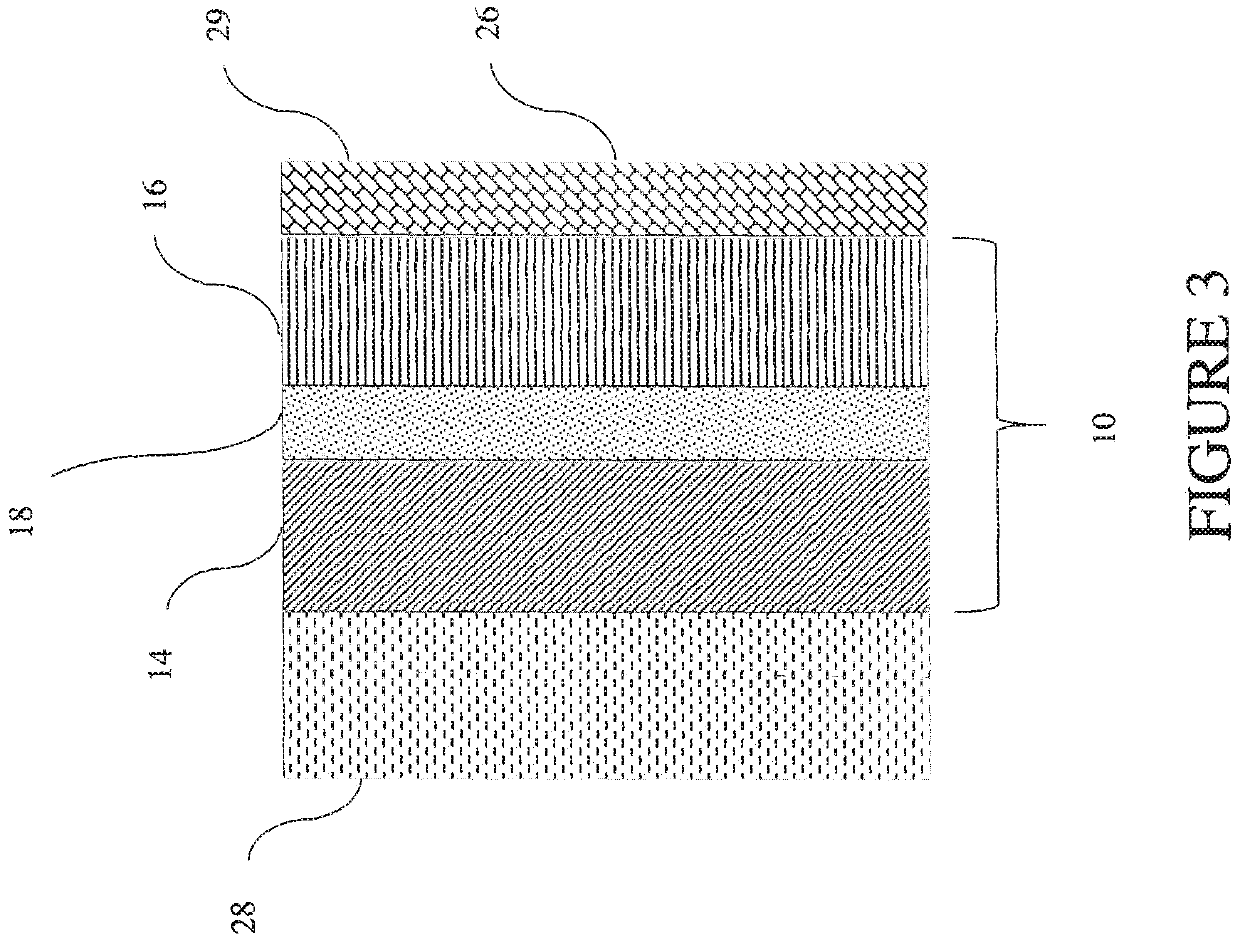Multilayer interlayer and glass laminate
a multi-layer interlayer and glass laminate technology, applied in the field of multi-layer interlayer and glass laminate, can solve the problems of insufficient flexural strength, flexural strength and other properties, insufficient sound damping and acoustic barrier performance, etc., and achieve excellent flexural strength and stiffness, excellent sound insulation characteristics, and flexural strength
- Summary
- Abstract
- Description
- Claims
- Application Information
AI Technical Summary
Benefits of technology
Problems solved by technology
Method used
Image
Examples
specific embodiments
[0285]The following is an exemplification of specific embodiments of the present invention based on the description above. These specific embodiments are just exemplary, and many additional specific embodiments will be evident to those of ordinary skill in the relevant art from the above description optionally in combination with additional information generally known to those of ordinary skill in the relevant art.
[0286]An interlayer in which a ratio of a sum total of the thickness of the layers B to a sum total of the thickness of the layers A and C ((sum total of the thickness of the layers B) / (sum total of the thickness of the layers A+C)) is in the range of from about 1 / 30 to about 1 / 1.
[0287]A laminate in which the transmittance at a wavelength of 1,500 nm is about 50% or less.
[0288]An interlayer in which a heat-shielding material is contained in at least one layer of either the layers B or the layers A and / or C.
[0289]An interlayer in which the heat-shielding material is at leas...
examples
[0315]The invention will be further understood from the following specific examples of the properties of the laminated glass. However, it will be understood that these examples are not to be construed as limiting the scope of the present invention in any manner.
[0316]The following physical properties evaluations were conducted with respect to the laminated glasses obtained in the following Examples A-1 to A-5, B-1 to B-3, C-1 to C-3, D-1 and Comparative Examples CEX-1 to CEX-6.
[0317]Materials
[0318]The materials used in the following examples are as follows.
[0319]Melt indices (MI) were measured according to ASTM D1238 at a polymer melt temperature of 190° C. and under a weight of 2.16 kg.
[0320]The soda-lime-silica float glass (1.6 mm nominal thickness) used in the Examples was obtained from Technical Glass Products, Inc. (Nyland, Pa., USA).
[0321]PVB1—a monolayer PVB interlayer sold by Kuraray America, Inc. (Wilmington, Del., USA) under the trademark “BUTACITE”.
[0322]AC-PVB—a trilayer...
PUM
| Property | Measurement | Unit |
|---|---|---|
| wt % | aaaaa | aaaaa |
| mol % | aaaaa | aaaaa |
| mol % | aaaaa | aaaaa |
Abstract
Description
Claims
Application Information
 Login to View More
Login to View More - R&D
- Intellectual Property
- Life Sciences
- Materials
- Tech Scout
- Unparalleled Data Quality
- Higher Quality Content
- 60% Fewer Hallucinations
Browse by: Latest US Patents, China's latest patents, Technical Efficacy Thesaurus, Application Domain, Technology Topic, Popular Technical Reports.
© 2025 PatSnap. All rights reserved.Legal|Privacy policy|Modern Slavery Act Transparency Statement|Sitemap|About US| Contact US: help@patsnap.com



